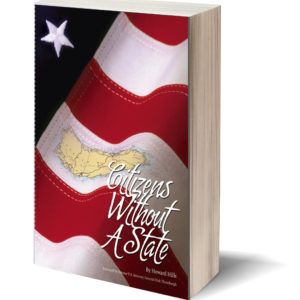While statehood for Puerto Rico is a life-changing issue for millions of Americans, one of the side issues that is of concern to many people is how a state of Puerto Rico could change Congress. We found a report from the Congressional Research Service that addresses this exact question.
Congress and the balance of power
Back in the 19th century, the big question in adding new states was whether or not they would allow slavery. It was believed that it would be better for the United States to keep a delicate balance of states that allowed slavery and states that did not. Obviously, by now we do not want any states that allow slavery. It is hard to believe that we ever thought it was a good idea to allow a tightrope walk between allowing and forbidding slavery. But it became so ingrained in people’s minds that many Americans continue to think that states must be admitted in pairs to preserve the balance of power in Congress.
Now, these people are not thinking about slavery when they think about the balance of power. They are thinking about the two important national political parties: Republicans and Democrats. Whether they are determined to keep a nearly 50/50 split, hopeful of giving Democrats a majority, or adamant that Republicans should keep their slight margin, these people do not want to see a clear majority for either party.
People for whom this is an important issue — and there are many of them — can become obsessed with the idea that Puerto Rico might bring in two Democratic senators. The thinking goes that Puerto Rico would always vote for Democratic senators, making it very difficult for Congress to keep that 50/50 split in the future. The House could see the same situation if four of five Members of Congress from Puerto Rico were reliably Democratic.
The errors
Obviously, Puerto Rico does not vote Democratic all the time. Right now, there is a Republican governor and a Democratic Resident Commissioner. Last year, the opposite was true. Any clear-sighted view of the facts, whether through the history of the territory or with current information, shows that this fear of Puerto Rico as a blue state is not based on facts.
All we can say is that, in spite of the obvious truth, people continue to believe this. We note that when Alaska and Hawaii were admitted as states, it was widely believed that Hawaii would be red and Alaska blue, and the opposite is true.
The Congressional Research Service
So what did the Congressional Research Service conclude about how a state of Puerto Rico might change Congress?
They did not consider the question of political party. They also did not discuss the Senate, because that is an easy question: every state gets two Senators.
When it comes to the House, however, they recognized that — depending on the population in the territory at the time of admission — Puerto Rico could have as many as five Members of Congress. The number of congressional representatives each state gets is based on the state’s population. Therefore, the number of Members each state gets can change over time, even if no new states are admitted.
“If the House were faced with the addition of five new Representatives,” the report explained, “it could accommodate them either by expanding the size of the House or adhering to the current 435-seat statutory limit, which would reduce the number of Representatives in other states.”
Both of these approaches have been taken in the past. Usually, the number of members has been increased temporarily when a new state is admitted. The next time a census takes place, the Congress is reapportioned, and the number has typically been reduced back to the most recent limit.
The report looks at options based on the 2010 census. “When Puerto Rico is included as the 51st state, it is allocated five seats in the House of Representatives,” the CRS reports. “Without Puerto Rican statehood, California, Florida, Minnesota, Texas, and Washington would have been allocated the last five seats rather than Puerto Rico. It is fairly clear that with a population of almost 4 million people, Puerto Rico’s statehood would have an impact on the apportionment process unless the size of the House is increased.”
Puerto Rico has a smaller population now, and the mentioned states have also seen changes. However, it is certainly possible that some group of states – perhaps two or three — would end up with one fewer Member of Congress. That is, unless the size of the House were increased.
The bottom line
The CRS was able to say that California would have lost a seat if Puerto Rico had been admitted in 2011. California has both Democratic and Republican Congressional representatives, and so would Puerto Rico. It is not possible, therefore, to say that the House would have an extra Democrat or an extra Republican. We could say the same for the remaining states mentioned in the CRS report.
Without plenty more additional details, there is no way to determine what effect Puerto Rico’s admission could have on the balance of power in Congress.
This issue is a big one in the minds of many people, but it is a straw man. As a battleground state, Puerto Rico may or may not affect the balance of power in Congress. It would depend not only on which party is best able to woo voters in Puerto Rico and in the other states, but also on the populations of Puerto Rico and the rest of the states.
This is a concern for many, but it should not be allowed to overwhelm the real issue: justice and equality for the millions of U.S. citizens living in Puerto Rico. Reach out to your congressional representatives and let them know that you support Puerto Rico statehood.







One response
Based on the 2020 Census, Puerto Rico would be apportioned four U.S. Representatives.
The states of California, Colorado, Minnesota, and Montana would each lose a seat if the seats were simply reassigned from the 435 quota.